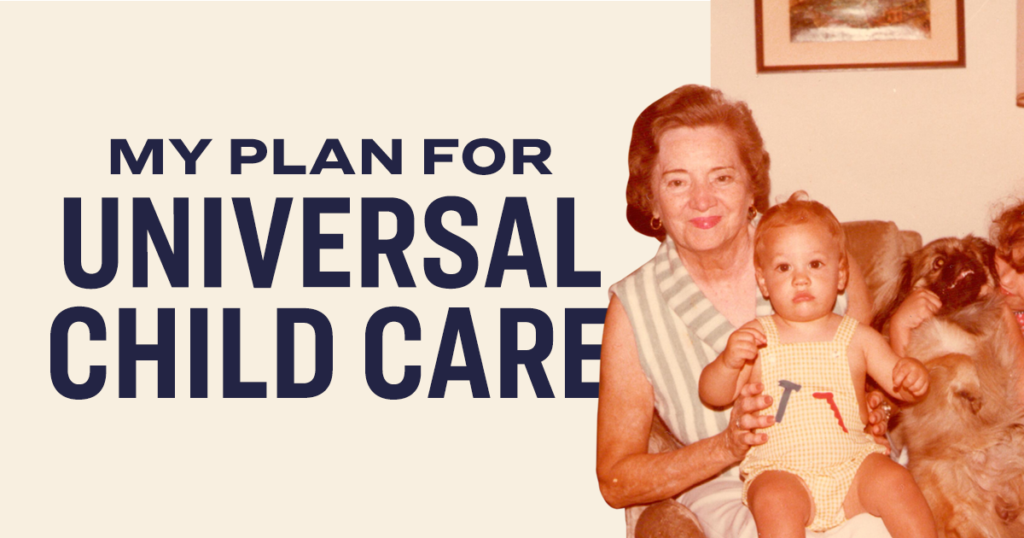Federally Funded Child Care: A Necessity Now Especially

I often discuss the need for federally funded child care, which would almost the biggest addition to the welfare safety net imaginable, even if not everyone would benefit. Those who would benefit…would really benefit and it would be a huge boon to the economy. It’s been necessary for decades. But it’s even more necessary now, as child care keeps lots of people out of the workforce entirely as the pandemic winds down.
President Joe Biden’s proposed American Families Plan would spend $1.8 trillion on several programs, including universal preschool education and funding for child care.
Currently, working families with children under age 5 spend about 10% of their income on child care, according to an analysis of U.S. Census data by the Center for American Progress think tank. The American Families Plan proposes $225 billion on subsidies to ensure that low- and middle-income families spend no more than 7% of their income on child care.
An Arizona State University professor who researches child care policy believes that funding child care is vital for the country’s economic recovery from the short but deep pandemic recession.
“The recession has been disproportionately brutal to working women, and in particular, women with preschool and school-age children,” said Chris Herbst, an associate professor in the School of Public Affairs and a faculty affiliate in the School of Social Work in the Watts College of Public Service and Community Solutions. He researches early childhood education, child care and the impact of policies and markets on child, parental and family well-being.
“It has drawn into sharp focus just how critical child care is for the ability of modern families to function and in particular the ability of mothers to have access to the labor market. If you shut down child care, you shut down the ability to access the labor market, and you’re basically removing about half the family income,” he said.
Moreover, we’ve had federally funded child care in the past (historians have known this for decades, but as per usual social science makes a big deal of “discovering” what historians have already written about extensively).
Q: Can you describe your research into the only time that the U.S. has had universal child care?
A: I stumbled upon this little-known child care program that the federal government ran during World War II.
During the early stages of the war, the government encouraged women without kids to enter the labor market to help build tanks and everything else that was needed.
What quickly became clear is that there were not enough childless women to fully prepare the nation for war. There was a lot of reluctance to allow women, and particularly women with young children, to enter the labor market, but it became overwhelmingly clear that women with children were needed.
So the federal government, for the first time, created what was essentially a universal and nearly fully subsidized child care program to look after kids in child care centers while the moms, the Rosie the Riveters, went to work.
The program was universal in the sense that it was open to low-income and high-income kids, no matter where they lived, rural or urban, and irrespective of whether the mothers were working, although in most cases they were.
I was curious to see whether the initial skepticism around this program — and the skepticism was political and also societal — held throughout the war and after.
What was interesting was that some of the biggest skeptics were the mothers themselves whose kids were in child care.
Q: What did you discover?
A: I found surveys of mothers that were given as they were leaving the program. They were essentially customer-satisfaction surveys. They found, basically, 100% customer satisfaction.
The other thing I looked at was what happened to the kids. I was interested not just in their short-run outcomes but whether they were they better off as adults. That’s really the big question for those studying the impact of child care and early childhood interventions.
I found adults in census data who were likely participating in these child-care programs and I compared those folks to individuals who, because of age and location, were not participating in the programs.
I found that the adults who were participating in these World War II child care programs, throughout their 20s, 30s, 40s and 50s, were more likely to be employed, and were earning much more than their counterparts who did not participate. They were less likely to receive assistance. They were in better self-reported health.
Literally, with outcome after outcome, this program seemed to have a positive impact on the adult lives of the participants.
As it turned out, the more I learned about the program, it wasn’t surprising because even though it had to be operable really fast, it was of very high quality. It employed professional teachers, paid them well, delivered health and social services to the kids, and healthy meals. They did academic work with the older kids. There are cute pictures online you can find of kids painting and looking happy.
The federal government was really investing in human capital.
Such programs today would be painted as radical. But there’s plenty of precedent. And we need to build on those precedents to reinvigorate the lives of millions of struggling Americans.


